Enjoying the content on 3QD? Help keep us going by donating now.
Category: Recommended Reading
Martin Cruz Smith (1942 – 2025) Novelist
Enjoying the content on 3QD? Help keep us going by donating now.
Fanny Howe (1940 – 2025) Poet And Novelist
Enjoying the content on 3QD? Help keep us going by donating now.
Sunday Poem
Lessons in Mathematics
about love then, but I knew the shape.
by Amy Dougher-Solórzano
from Rattle Magazine
Enjoying the content on 3QD? Help keep us going by donating now.
Connie Francis (1937 – 2025) Singer, Actor, and Composer
Enjoying the content on 3QD? Help keep us going by donating now.
Friday, July 18, 2025
The English major is languishing, here is how it might be repaired
Shaye Herman at The Common Reader:
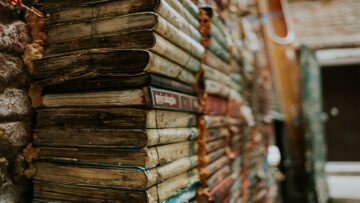 It is no great secret that the undergraduate English department is in a state of decline: a shrinking number of English majors, a decrease in faculty, and a reputation of unemployability and irrelevance. Much has been written about this decline. Nathan Heller’s recent New Yorker piece, “The End of the English Major,” has already managed to spark two separate New York Times opinion pieces. Like much previous writing on the topic, Heller interviewed academics and students and ended up with a familiar group of diagnoses and cures. When summarized, the discussion boils down to this:
It is no great secret that the undergraduate English department is in a state of decline: a shrinking number of English majors, a decrease in faculty, and a reputation of unemployability and irrelevance. Much has been written about this decline. Nathan Heller’s recent New Yorker piece, “The End of the English Major,” has already managed to spark two separate New York Times opinion pieces. Like much previous writing on the topic, Heller interviewed academics and students and ended up with a familiar group of diagnoses and cures. When summarized, the discussion boils down to this:
“English departments rely too heavily on the Great Books. We need to study a more diverse group of authors.”
“No. Kids these days don’t respect the canon. This emphasis on new texts and perspectives is to the detriment of the established classics.”
“No. English suffers from a reputation problem. We must do more to battle the perception that English departments are impractical, unserious, and out of touch.”
“No. Students are focused on majors with clear paths to employment and high salaries. We must better communicate career opportunities to students. English majors can still get jobs in STEM and business fields. ”
“No. Focusing on non-humanities-based careers reinforces the idea that English is a useless degree, a sideshow to more profitable pursuits.”
“No. The actual problem is our tunnel vision on the traditional study of literature. We need to incorporate disciplines like cultural studies, media studies, and women, gender, and sexuality studies.”
“No. The increased focus on secondary disciplines and pre-professional interests is driving away students who are interested in the traditional study of English.”
I list these critiques because within the discourse—Heller’s article included—there is strikingly little mention of the literature English departments ignore: genre fiction. Genre fiction, also known as “commercial fiction” or “popular fiction,” typically falls into pre-established literary genres with their own rules and styles. Think fantasy, science fiction, crime, horror, romance, young adult, and historical fiction.
More here.
Enjoying the content on 3QD? Help keep us going by donating now.
The breakthrough proof bringing mathematics closer to a grand unified theory
Ananyo Bhattacharya in Nature:
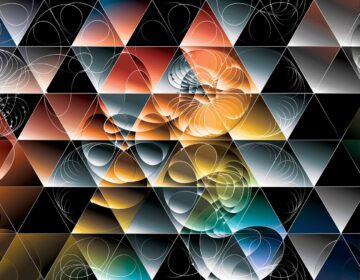 One of the biggest stories in science is quietly playing out in the world of abstract mathematics. Over the course of last year, researchers fulfilled a decades-old dream when they unveiled a proof of the geometric Langlands conjecture — a key piece of a group of interconnected problems called the Langlands programme. The proof — a gargantuan effort — validates the intricate and far-reaching Langlands programme, which is often hailed as the grand unified theory of mathematics but remains largely unproven. Yet the work’s true impact might lie not in what it settles, but in the new avenues of inquiry it reveals.
One of the biggest stories in science is quietly playing out in the world of abstract mathematics. Over the course of last year, researchers fulfilled a decades-old dream when they unveiled a proof of the geometric Langlands conjecture — a key piece of a group of interconnected problems called the Langlands programme. The proof — a gargantuan effort — validates the intricate and far-reaching Langlands programme, which is often hailed as the grand unified theory of mathematics but remains largely unproven. Yet the work’s true impact might lie not in what it settles, but in the new avenues of inquiry it reveals.
“It’s a huge triumph. But rather than closing a door, this proof throws open a dozen others,” says David Ben-Zvi at the University of Texas at Austin, who was not involved with the work.
Proving the geometric Langlands conjecture has long been considered one of the deepest and most enigmatic pursuits in modern mathematics. Ultimately, it took a team of nine mathematicians to crack the problem, in a series of five papers spanning almost 1,000 pages.
More here.
Enjoying the content on 3QD? Help keep us going by donating now.
Letter from National Academy of Sciences Members to the Honorable Senators and Representatives of the United States
Enjoying the content on 3QD? Help keep us going by donating now.
The Tainted Legacy of an Iconic Health Care Giant: “No More Tears,” by Gardiner Harris, is a scathing expose of Johnson & Johnson
Gillian Neimark at Undark:
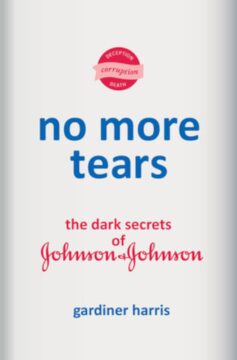 Near the beginning of “No More Tears: The Dark Secrets of Johnson & Johnson,” Gardiner Harris’s scathing exposé of the iconic pharmaceutical giant, he writes, “To me, my family, and everyone I knew, Johnson & Johnson was the ideal American corporation.” But in this forensic tour de force, he chronicles the many ways in which the health care behemoth repurposed science to protect profit — lying in sworn testimonials, massaging trial data, pouring billions into litigation, and sacrificing the lives and health of millions of Americans.
Near the beginning of “No More Tears: The Dark Secrets of Johnson & Johnson,” Gardiner Harris’s scathing exposé of the iconic pharmaceutical giant, he writes, “To me, my family, and everyone I knew, Johnson & Johnson was the ideal American corporation.” But in this forensic tour de force, he chronicles the many ways in which the health care behemoth repurposed science to protect profit — lying in sworn testimonials, massaging trial data, pouring billions into litigation, and sacrificing the lives and health of millions of Americans.
To understand the scale of that betrayal, Harris begins not with a drug, but with arguably the company’s most iconic product: Johnson’s Baby Powder. Introduced in 1894 and packaged in soft white and blue tones, the baby powder came to embody the purity, safety, and primal power of maternal care. The fragrance alone — engineered from more than 200 compounds — has imprinted itself onto olfactory memory.
As Harris explains, the company referred to the powder as its “crown jewel” and “Golden Egg.” Other companies had “rational” trust, a 1999 slide deck boasted, but “only Johnson & Johnson also has real emotional trust.”
More here.
Enjoying the content on 3QD? Help keep us going by donating now.
How to Give a Good Toast
Matt Abrahams in Time Magazine:
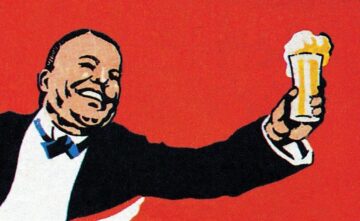 Have you ever sat through a dull or inappropriate toast at a celebration, desperately wishing for it to end? You’re not alone. Bad toasts have a way of dragging down events, resulting in awkward silences, eye-rolling, and seat shifting. The problem with these subpar tributes is that they often make the audience uncomfortable, drag on and on, or focus too much on the speaker, rather than the individual or occasion being honored. Bad toasts can easily drain the energy from the room, detracting from the purpose of the celebration—to unite people in a moment of joy, respect, or reflection.
Have you ever sat through a dull or inappropriate toast at a celebration, desperately wishing for it to end? You’re not alone. Bad toasts have a way of dragging down events, resulting in awkward silences, eye-rolling, and seat shifting. The problem with these subpar tributes is that they often make the audience uncomfortable, drag on and on, or focus too much on the speaker, rather than the individual or occasion being honored. Bad toasts can easily drain the energy from the room, detracting from the purpose of the celebration—to unite people in a moment of joy, respect, or reflection.
Ultimately, giving a good toast can be a powerful and fulfilling experience, transforming a potentially awkward obligation into a heartfelt tribute. The secrets to success lie in reframing your approach, embracing a structured format, and keeping your focus on those being celebrated. The next time you find yourself standing in front of a group, ready to deliver a tribute, remember: it’s not about you—it’s about honoring the special moments that connect us all. So lift your glass, embrace the moment, and let your words be a gift that resonates with everyone present. By doing so, you not only create a beautiful memory for the honoree but also enrich the experience for everyone involved.
More here.
Enjoying the content on 3QD? Help keep us going by donating now.
Exploring Life On Mars | David Bowie
Enjoying the content on 3QD? Help keep us going by donating now.
A Meditation on Rumi and the Power of Poetry
Enjoying the content on 3QD? Help keep us going by donating now.
Marlen Haushofer’s Parables Of Isolation
Janique Vigier at Bookforum:
 IN 1946 THE AUSTRIAN WRITER Marlen Haushofer began publishing fairy tales and short stories in newspapers and small magazines. Her prewar writings—stories, poems, chapters of novels—had all been lost, and during the war she wrote “not a single line.” The new stories were a pragmatic measure: they were written to be published, to supplement the household budget. (Her husband, a provincial dentist, frittered the family’s finances away on flashy cars.) Yet since neither he nor her sons read her works, they could also be a form of revenge. “Professionally, I feed on anger,” she wrote to a friend in 1968, two years before her death. This stifled anger takes oblique forms. Philosophical novels, thrillers, dreams: her enervating allegories are like burrs—they stick.
IN 1946 THE AUSTRIAN WRITER Marlen Haushofer began publishing fairy tales and short stories in newspapers and small magazines. Her prewar writings—stories, poems, chapters of novels—had all been lost, and during the war she wrote “not a single line.” The new stories were a pragmatic measure: they were written to be published, to supplement the household budget. (Her husband, a provincial dentist, frittered the family’s finances away on flashy cars.) Yet since neither he nor her sons read her works, they could also be a form of revenge. “Professionally, I feed on anger,” she wrote to a friend in 1968, two years before her death. This stifled anger takes oblique forms. Philosophical novels, thrillers, dreams: her enervating allegories are like burrs—they stick.
Haushofer never achieved the international recognition of her radical postwar contemporaries—Thomas Bernhard, Ingeborg Bachmann, Elfriede Jelinek, Peter Handke. Slightly older, preternaturally unimposing, she rarely left the country, was only tepidly recognized in her time, and worked at the margins.
more here.
Enjoying the content on 3QD? Help keep us going by donating now.
Friday Poem
Viaticum
That all roads led to Rome, we know,
but what of all those bygone travelers,
the provisions and allowances
that saw them on their way — the litter
or the cart, the nuts and dates
and honeyed bread and wine,
coins to grease a palm or pay a toll?
And then the Eucharist for those near death,
as if the afterlife were also on a road
and prayers were grave goods for
their migrant souls.
So many crossroads and cross-purposes.
Imagine the gridlock
after earthquake, the fire and flood!
Now it’s all humdrum. No laden
hampers or talisman against the evil eye,
no provender ‘just in case’. There’s
a sign for food and toilets every 20 miles,
a Burger King, McDonald’s, fish and chips,
yet still I carry your photograph
and bear in mind your words
that sent me on my way –
Take care. I love you. Come back soon.
Call us when you can.
by Michael Jackson
from Dead Reckoning
Aukland University Press, 2006
Enjoying the content on 3QD? Help keep us going by donating now.
Monks in Jersey
Simon Wu at the Paris Review:
 A coming-of-age ceremony, a Burmese bar mitzvah, a meditation retreat: I had called it all of those things to friends in the weeks before. It was a little bit of each but “more ceremonial slash familial than necessarily religious,” I’d qualified. We’d bargained with my mother for weeks to get out of it. We’re nearly thirty, my brother Nick reasoned. We’re adults. We didn’t want to shave our heads, wear monk’s robes, meditate all day. Maybe it is important to you, but we don’t care about religion, we said, armed with years of therapy.
A coming-of-age ceremony, a Burmese bar mitzvah, a meditation retreat: I had called it all of those things to friends in the weeks before. It was a little bit of each but “more ceremonial slash familial than necessarily religious,” I’d qualified. We’d bargained with my mother for weeks to get out of it. We’re nearly thirty, my brother Nick reasoned. We’re adults. We didn’t want to shave our heads, wear monk’s robes, meditate all day. Maybe it is important to you, but we don’t care about religion, we said, armed with years of therapy.
We haggled it down from a week to a long weekend. My uncle Pawksa and my cousins would arrive from Boston late that night, and my mother was occupied trying to make sure they didn’t interact with my other uncle, Soe Aung, and his sons. Ten of us in total: me, my dad, my brothers Nick and Duke, my two uncles, my four cousins. One woman for whom the whole thing was actually for: my grandmother. My mother, one woman to hold the whole thing up.
more here.
Enjoying the content on 3QD? Help keep us going by donating now.
Thursday, July 17, 2025
How the nature of friendship has changed through the centuries
Bénedicte Sère at Psyche:
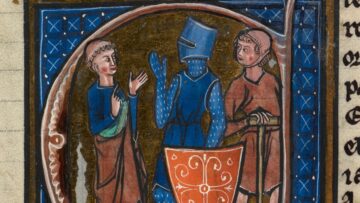 In the Middle Ages, friendship was more than a private bond – it was a social instrument, intertwined with moral ideals, religious duties and political hierarchies. Medieval thinkers devoted sustained attention to its meaning and value, often linking it to the Christian ideal of charity. As we shall see, friendship also emerges as a golden thread that weaves together antiquity and Christianity, reason and faith, the individual and the social body.
In the Middle Ages, friendship was more than a private bond – it was a social instrument, intertwined with moral ideals, religious duties and political hierarchies. Medieval thinkers devoted sustained attention to its meaning and value, often linking it to the Christian ideal of charity. As we shall see, friendship also emerges as a golden thread that weaves together antiquity and Christianity, reason and faith, the individual and the social body.
Medieval Christian Europe inherited from antiquity a deep reverence for the virtue of friendship. Thinkers in the Middle Ages read Cicero and Seneca, and adapted the ancients’ ethical models to their own literature, exegesis and philosophy. But the decisive turning point occurred in 1246 when Aristotle’s major treatise on friendship, found in Books VIII and IX of the Nicomachean Ethics, was translated into Latin and began to circulate widely. With Aristotle, the medieval world inherited a powerful, systematic and comprehensive treatise on friendship.
More here.
Enjoying the content on 3QD? Help keep us going by donating now.
An attack on a fundamental proof technique reveals a glaring security issue for blockchains and other digital encryption schemes
Erica Klarreich in Quanta:
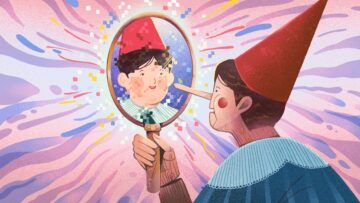 Randomness is a source of power. From the coin toss that decides which team gets the ball to the random keys that secure online interactions, randomness lets us make choices that are fair and impossible to predict.
Randomness is a source of power. From the coin toss that decides which team gets the ball to the random keys that secure online interactions, randomness lets us make choices that are fair and impossible to predict.
But in many computing applications, suitable randomness can be hard to generate. So instead, programmers often rely on things called hash functions, which swirl data around and extract some small portion in a way that looks random. For decades, many computer scientists have presumed that for practical purposes, the outputs of good hash functions are generally indistinguishable from genuine randomness — an assumption they call the random oracle model.
“It’s hard to find today a cryptographic application… whose security analysis does not use this methodology,” said Ran Canetti(opens a new tab) of Boston University.
Now, a new paper (opens a new tab) has shaken that bedrock assumption.
More here.
Enjoying the content on 3QD? Help keep us going by donating now.
Yuval Noah Harari and Cheng Lesong on understanding ourselves in an age of anxiety
Enjoying the content on 3QD? Help keep us going by donating now.
What a 1964 Book About American Anti-Intellectualism Can Teach Us About the Trump Era
Peter Balakian at Literary Hub:
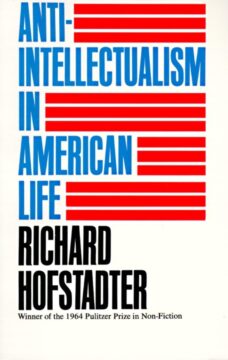
Some books written decades ago return to us, with a renewed relevance, in critical times. Richard Hofstadter’s Pulitzer Prize-winning book of 1964 Anti-Intellectualism in American Life is one. The eminent American historian, who taught at Columbia University in the 1950s and 60s, analyzed a strain in American culture that can help us understand some of the underpinnings of Donald Trump’s assaults on higher education, intellectuals, culture, and free speech. Anti-intellectualism is more than a descriptive term, it’s a concept that Hofstadter developed having studied the roots of the “national disrespect of the mind.” His study was prompted by the virulent assaults on intellectuals, liberalism, and higher education unleashed by Senator Joseph McCarthy in the 1950s in his tyrannous, anti-communist crusade, in which he claimed “commies” were infiltrating the government (even President Eisenhower was a suspect).
Hofstadter traced anti-intellectualism to the following sources: 1) evangelical religion with its disdain for modernity, science, and rational thought, 2) pioneer individualism with its libertarian worship of practical skills and anti-institutionalism, and 3) businessman culture grounded in the practical life in pursuit of wealth and materialism.
More here.
Enjoying the content on 3QD? Help keep us going by donating now.
Unsentimental Education: Peter Weiss’s Aesthetics of Resistance
Jared Pollen in Liberties:
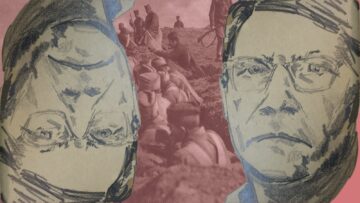 There’s a quote I’m fond of, falsely attributed to Lenin, that “ethics are the aesthetics of the future.” It was in fact coined by Gorky, and as with so many misattributed phrases, it is also misquoted. I had always quietly reordered the line in my mind, preferring to have aesthetics in the first position, and when I finally went looking for it, and found it — in an essay Gorky wrote on Anatoly France — I was vindicated to discover that it actually read: “Aesthetics was [his] ethics — the ethics of the future.” That it’s thought to be authored by Lenin is perhaps understandable: it is a revolutionary sentiment after all, one that would have pleased the Romantics, the Surrealists, or any other radical avant-garde that aimed at transvaluation. It could also easily be, I think, the unofficial epigraph, the spiritual motto of Peter Weiss’s trilogy of novels, The Aesthetics of Resistance.
There’s a quote I’m fond of, falsely attributed to Lenin, that “ethics are the aesthetics of the future.” It was in fact coined by Gorky, and as with so many misattributed phrases, it is also misquoted. I had always quietly reordered the line in my mind, preferring to have aesthetics in the first position, and when I finally went looking for it, and found it — in an essay Gorky wrote on Anatoly France — I was vindicated to discover that it actually read: “Aesthetics was [his] ethics — the ethics of the future.” That it’s thought to be authored by Lenin is perhaps understandable: it is a revolutionary sentiment after all, one that would have pleased the Romantics, the Surrealists, or any other radical avant-garde that aimed at transvaluation. It could also easily be, I think, the unofficial epigraph, the spiritual motto of Peter Weiss’s trilogy of novels, The Aesthetics of Resistance.
More here.
Enjoying the content on 3QD? Help keep us going by donating now.
